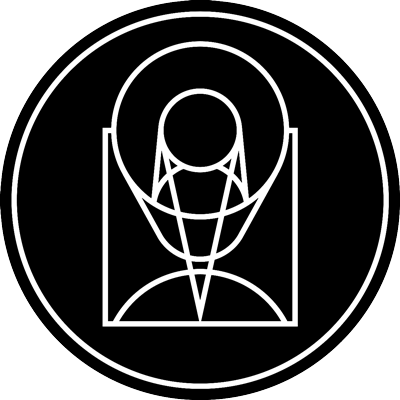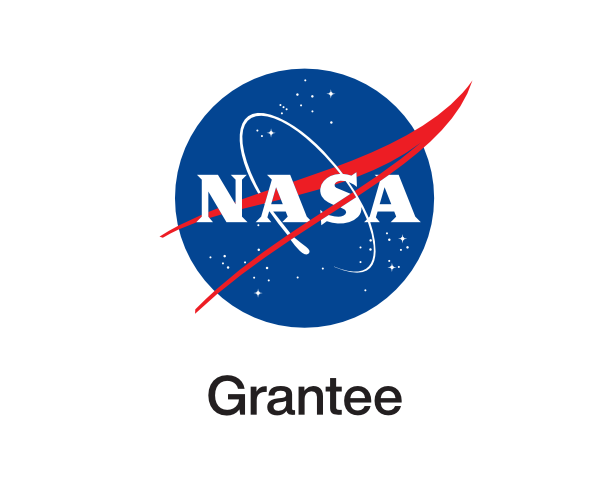Planetary Nebula NGC 6818

stsci_1998-11h March 19th, 1998
Credit: Robert Rubin (NASA Ames Research
NGC 6818 is in the constellation Sagittarius at a distance of about 6000 light-years. It has a diameter of about 0.5 light-year. The Hubble telescope observation was taken March 10, 1997 by the Wide Field and Planetary Camera 2. This is a composite of images taken in 3 filters: Halpha is red, Hbeta is blue, and [O III] (doubly ionized oxygen) 5007 is green. As a result of the longer exposure time at Hbeta, the central star of the planetary nebula appears blue. We see a roughly spherical outer envelope as well as a brighter vase-shaped interior "bubble". Astronomers believe that a fast wind from the hot central star is creating the elongated shape and in fact has caused a "blowout" at the two ends of the major axis (lower right and upper left). This nebula looks like a twin of NGC 3918, another planetary nebula (PN) that has been imaged by the Hubble telescope. The structure of NGC 3918 is remarkably similar to that of NGC 6818 - it has an outer spherical envelope, an inner brighter elongated bubble, and it also shows a blowout orifice at one end of the major axis in the bottom right-hand corner. By finding and studying such similar objects, it is hoped that crucial details can be learned about the evolutionary life history of planetary nebulae. One could call this "comparative PNology".
Provider: Space Telescope Science Institute
Image Source: https://hubblesite.org/contents/news-releases/1998/news-1998-11
Curator: STScI, Baltimore, MD, USA
Image Use Policy: http://hubblesite.org/copyright/

- ID
- 1998-11h
- Subject Category
- B.4.1.3
- Subject Name
- NGC 6818
- Credits
- Robert Rubin (NASA Ames Research
- Release Date
- 1998-03-19T00:00:00
- Lightyears
- 6,000
- Redshift
- 6,000
- Reference Url
- https://hubblesite.org/contents/news-releases/1998/news-1998-11
- Type
- Observation
- Image Quality
- Good
- Distance Notes
- Distance in lightyears
- Facility
- Hubble, Hubble, Hubble
- Instrument
- WFPC2, WFPC2, WFPC2
- Color Assignment
- Blue, Green, Red
- Band
- Optical, Optical, Optical
- Bandpass
- H-beta, OIII, H-alpha
- Central Wavelength
- 487, 500, 656
- Start Time
- Integration Time
- Dataset ID
- Notes
- Coordinate Frame
- ICRS
- Equinox
- 2000.0
- Reference Value
- 295.98173937361, -14.15495443472
- Reference Dimension
- 700.00, 700.00
- Reference Pixel
- -164.11291390431, -36.08373818519
- Scale
- -0.00001362164, 0.00001362164
- Rotation
- -130.94544253900
- Coordinate System Projection:
- TAN
- Quality
- Full
- FITS Header
- Notes
- World Coordinate System resolved using PinpointWCS 0.9.2 revision 218+ by the Chandra X-ray Center FITS X FITS Y EPO X EPO Y 771.58 1014.20 349.27 340.64 697.73 1060.92 375.14 166.01 827.34 953.92 366.51 508.81 706.78 940.36 553.85 336.86 792.67 901.18 497.90 522.73 Center Pixel Coordinates: 350.00 295.99036059133 350.00 -14.15316655788
- Creator (Curator)
- STScI
- URL
- http://hubblesite.org
- Name
- Space Telescope Science Institute Office of Public Outreach
- outreach@stsci.edu
- Telephone
- 410-338-4444
- Address
- 3700 San Martin Drive
- City
- Baltimore
- State/Province
- MD
- Postal Code
- 21218
- Country
- USA
- Rights
- http://hubblesite.org/copyright/
- Publisher
- STScI
- Publisher ID
- stsci
- Resource ID
- STSCI-H-p9811h-f-700x700.tif
- Resource URL
- https://mast.stsci.edu/api/latest/Download/file?uri=mast:OPO/product/STSCI-H-p9811h-f-700x700.tif
- Related Resources
- http://hubblesite.org/newscenter/archive/releases/1998/11
- Metadata Date
- 2022-07-06T00:00:00
- Metadata Version
- 1.2
Detailed color mapping information coming soon...















